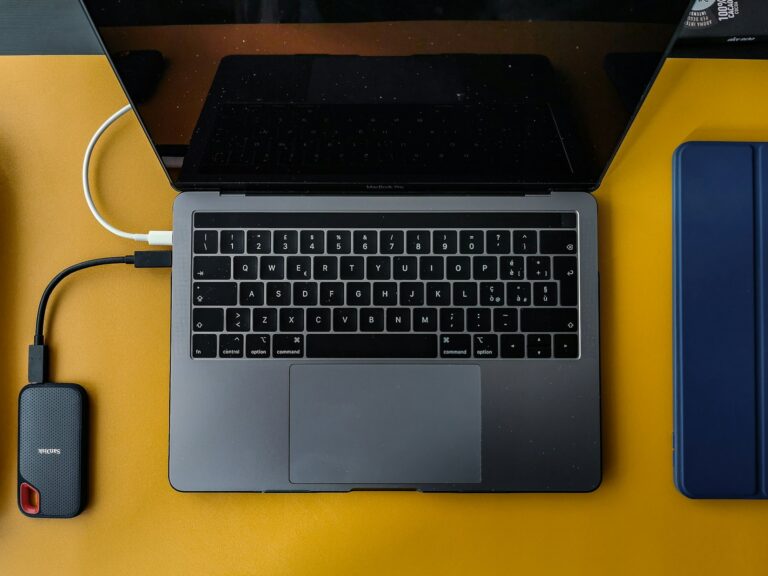When it’s time to recycle your old IT equipment, there’s one step you should never skip: data destruction. Whether you’re upgrading your devices or cleaning out your workspace, ensuring that your data is securely wiped is key. This process helps protect sensitive information from falling into the wrong hands. So, before you take your old gadgets to the recycling center in Savannah, make sure you understand how to effectively destroy data.
Think of this: every time you discard a computer or a smartphone, you could be handing over a treasure trove of personal information. From confidential emails at work to personal photos and login details, our devices store more than we often realize. To prevent any mishaps, it’s crucial to destroy the data on your device properly before recycling. In the following sections, you’ll see some useful tips to help you navigate this process smoothly and make sure your data stays safe.
Assessing and Identifying Sensitive Data
Identifying sensitive data might sound complicated, but it doesn’t have to be. The first step is understanding which devices in your office or home might harbor critical information. It’s more than just your laptop or desktop computer; devices like smartphones, tablets, and external hard drives are also common repositories for sensitive data. Even those old USB drives can hold personal or business-related info you might have forgotten about.
To keep track of everything, consider creating an inventory. You can list out all the possible devices that contain sensitive data. Here’s a simple way to start:
– Computers and laptops: These are the obvious places that store file backups, emails, and applications with sensitive data.
– Smartphones and tablets: They often have contact lists, text messages, photos, and app data.
– External drives: USB sticks, portable hard drives, and memory cards are often used for backups and can hold various files.
– Network equipment: Routers and modems might store settings and other information specific to your internet usage.
By carefully assessing each of these devices, you can determine where your sensitive data resides. Once you’re aware of all these details, you can move on to the data destruction process with confidence. Recognizing the scope of your personal information is step one towards ensuring it’s protected and properly destroyed when you recycle your equipment.
Methods of Data Destruction
When it comes to data destruction, there are a couple of go-to methods that effectively ensure your information is wiped clean. First, there’s physical destruction, which might involve shredding your devices, especially hard drives. This method is straightforward and guarantees data can’t be retrieved because the hardware is literally broken apart. However, it’s not always convenient or feasible if you’re recycling a large number of devices.
On the other hand, software-based wiping involves using special programs to overwrite data, making it unreadable. This is a solid option because it maintains the integrity of the device for recycling purposes, but you must ensure the software is thorough and meets certain standards. Choosing the right method depends on factors like the volume of devices, your access to equipment or software, and your comfort level with technology.
Here’s how to get the best results:
– For physical destruction, always wear safety gear and use proper equipment to dismantle devices safely. Consider hiring a professional service if you’re unsure.
– For software wiping, ensure the program you select is reputable and designed for your operating system. Follow the steps carefully to ensure complete data removal.
– Always double-check that the data is truly gone by attempting to access a few files after the process is complete.
Choosing the Right Data Destruction Service
Finding a reliable data destruction service is as vital as the destruction process itself. Not all services are created equal, so it’s wise to do some homework. Start by checking certifications that prove a service is authorized and follows industry regulations. Customer reviews can also give you insight into their reliability and effectiveness.
When evaluating services, consider the following points:
– Certifications: Ensure the service has endorsements that align with industry standards.
– Track Record: Look for reviews from previous clients to gauge their satisfaction and results.
– Flexibility: Some services offer different types of destruction methods. Depending on your needs, choose a service that matches your requirements.
– Security Measures: Discover what procedures they follow to ensure your data is securely destroyed and not mishandled.
Choosing a professional service saves you time and gives you peace of mind. These companies have the necessary tools and expertise, assuring you that your data destruction is handled properly. While DIY approaches might seem tempting, they often lack the same level of security and thoroughness.
Ensuring Compliance and Certification
With data protection laws growing stricter, it’s important to remain compliant when destroying old data. Using a certified data destruction service not only secures your data but also ensures you’re following all necessary legal steps. These certifications often include documentation of destruction and assurances that the process adhered to legal guidelines.
To guarantee you’re fully compliant:
– Request a certificate of destruction for your records. This document serves as proof that your data was properly handled.
– Check that the service provider follows state and federal regulations relevant to data handling and recycling.
– Always keep a record of destruction activities in case you need to verify compliance in the future.
Being thorough about compliance helps avoid potential legal problems and maintains your confidentiality standards.
Summing Up Your Data Destruction Efforts
As you wind down your efforts in making sure your data is destroyed before recycling, it’s worthwhile to reflect on its importance. Properly managing your data not only safeguards your personal and business information but also aligns with ethical recycling practices. Your actions ensure your info won’t be misused, something that’s more necessary than ever in today’s connected environment.
Think of protecting your data as securing the entrance to your digital life. Guarding this access prevents unwanted breaches and protects your privacy. By taking these steps, you not only help the environment with proper recycling practices but also contribute to a more secure digital landscape. As you continue to upgrade your tech and recycle the old, make data destruction a regular part of your process.
Safeguard your sensitive data by choosing Beyond Surplus for secure disposal of IT equipment in Savannah. Our expert solutions ensure your information is managed with the highest security standards, making it easy to recycle responsibly. Trust Beyond Surplus for peace of mind and contribute to a more secure and sustainable environment today.



